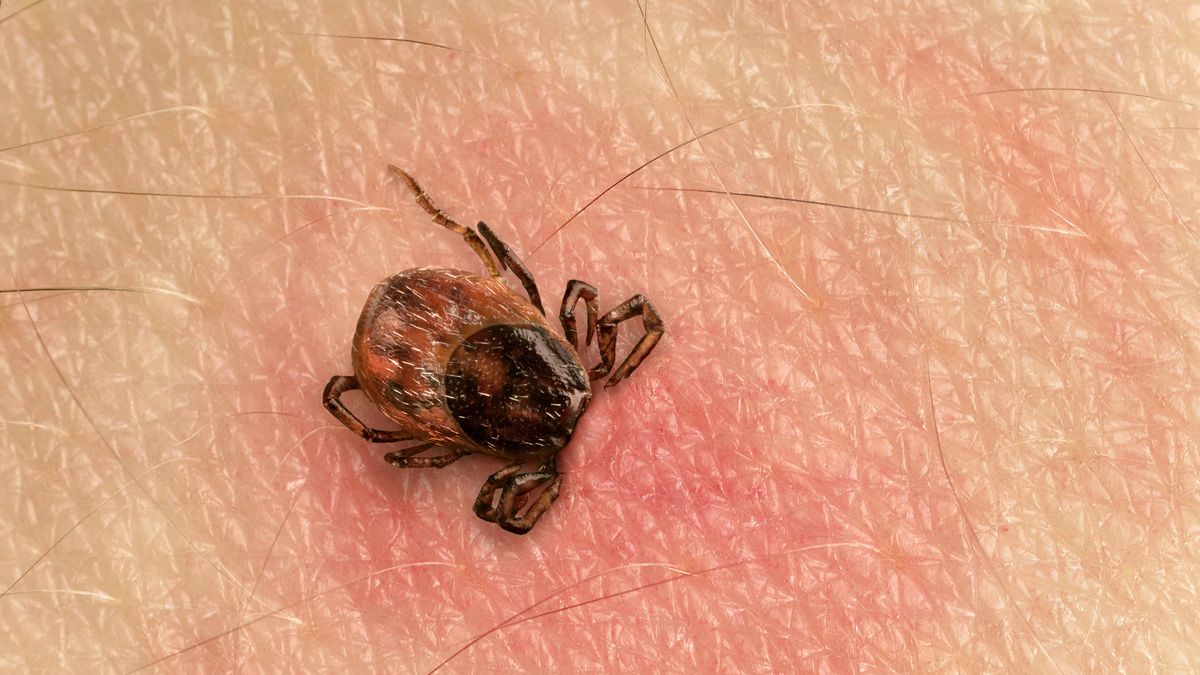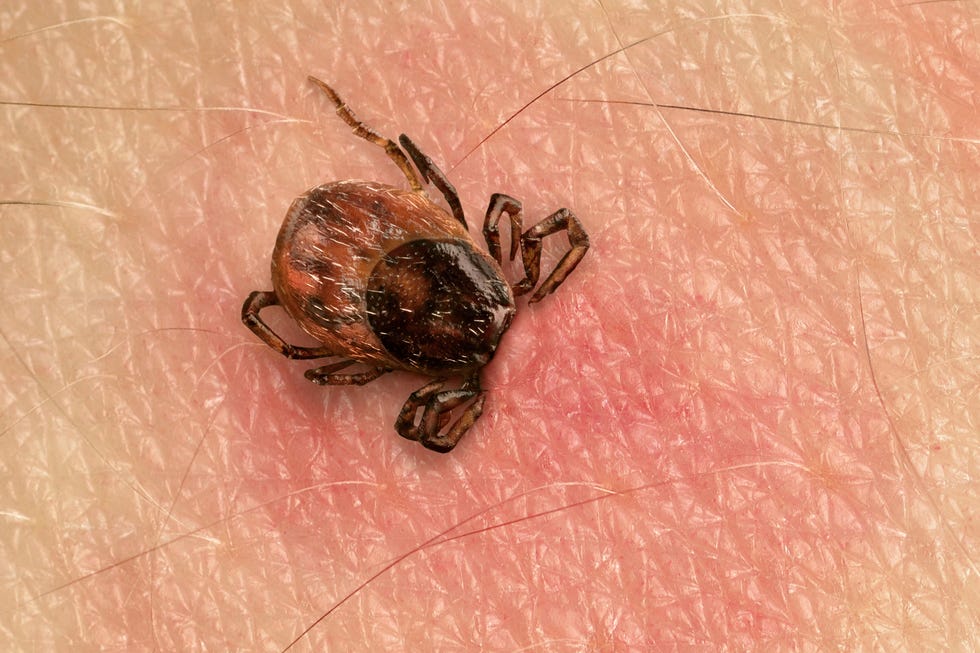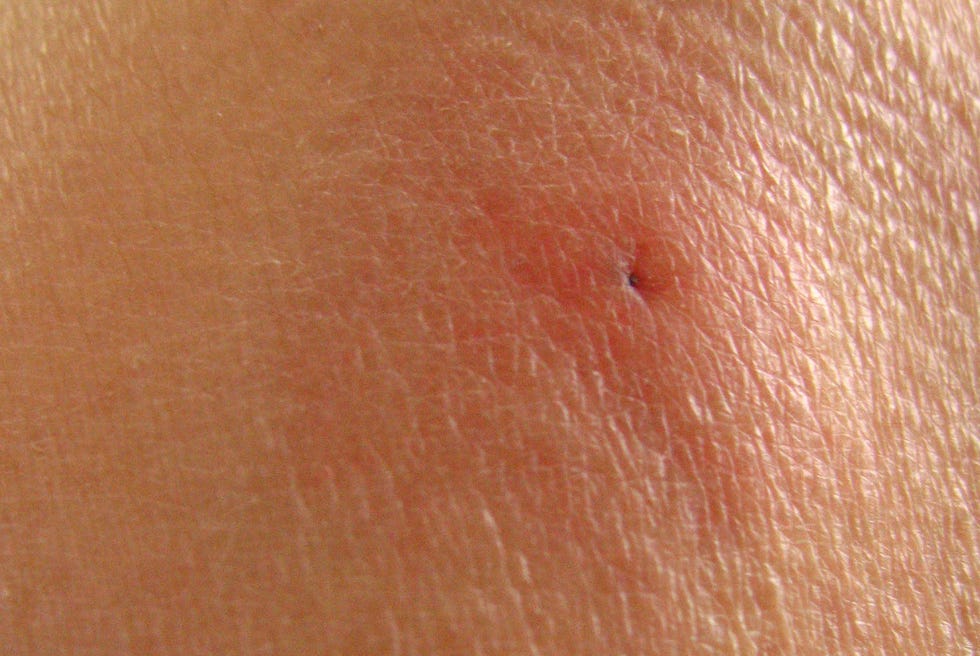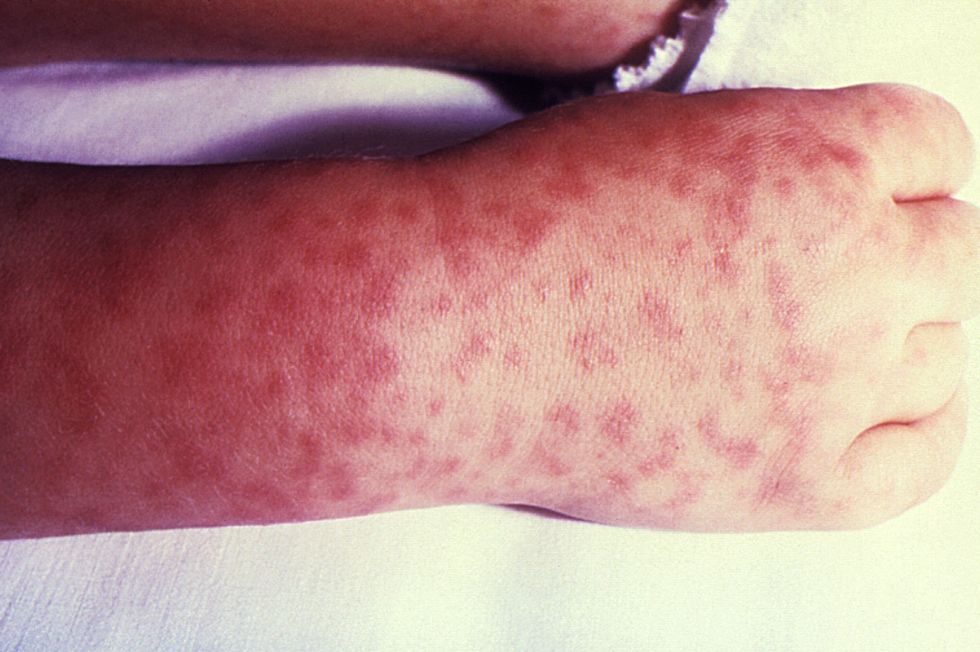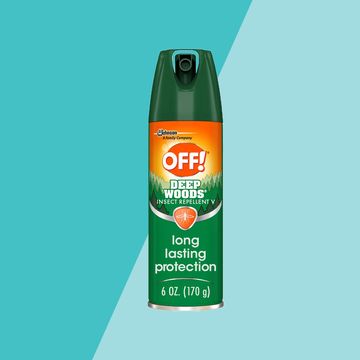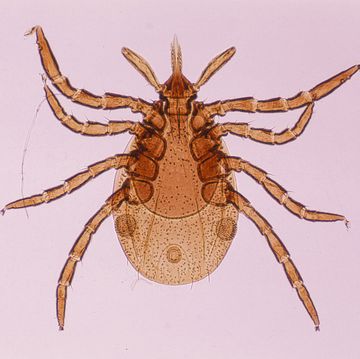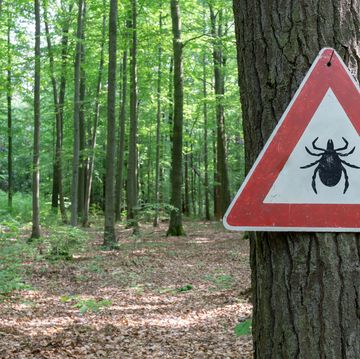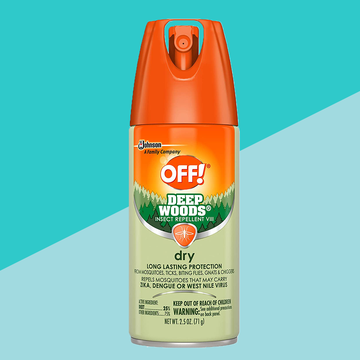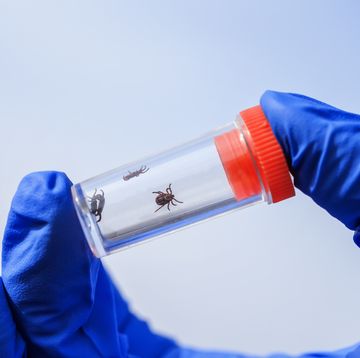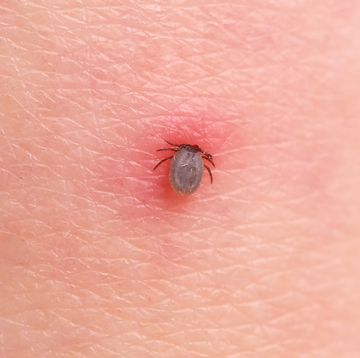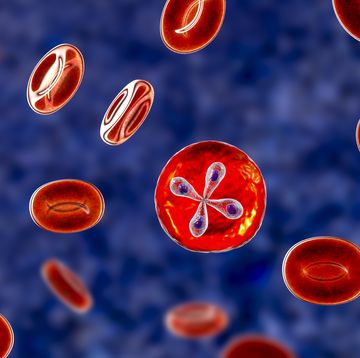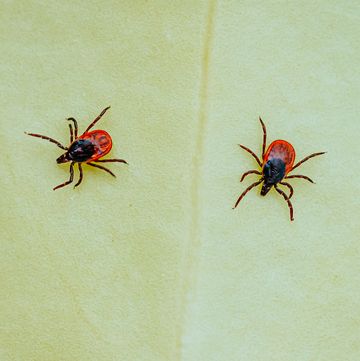Spending time outdoors raises your risk of getting an insect bite, but, of course, there are a lot of critters out there. If you’ve spent time in a wooded or brushy area lately, it’s understandable to wonder if that newly-acquired mark on your skin could be a tick bite. But…what does a tick bite look like?
It’s not always easy to tell. Tick and other insect bites can look similar, says Griffin Dill, Ph.D., coordinator of the Cooperative Extension: Tick Lab at The University of Maine. “Without finding a tick attached and feeding, it’s hard to differentiate one bite site from another,” he says.
Meet the Experts: Griffin Dill, Ph.D., coordinator of the Cooperative Extension: Tick Lab at The University of Maine; Gary Goldenberg, M.D., a board-certified dermatologist in New York City; Thomas Mather, Ph.D., director of the University of Rhode Island’s Center for Vector-Borne Disease and Tick Encounter Resource Center; Ife J. Rodney, M.D., board-certified dermatologist and founding director of Eternal Dermatology + Aesthetics; Joshua Zeichner, M.D., director of Cosmetic & Clinical Research in Dermatology at Mount Sinai Hospital.
But treating and preventing these bites can help keep nasty tick-borne illnesses like Lyme disease out of your future—so knowing how to identify a bite is crucial. Here, the signs and symptoms to watch out for, plus tick bite pictures to refer to when you suspect the blood-sucking critter has made its way onto your skin.
What does a tick bite look like?
The signs of a tick bite actually vary from person to person, since everyone’s immune system reacts differently to them, explains Thomas Mather, Ph.D., director of the University of Rhode Island’s Center for Vector-Borne Disease and Tick Encounter Resource Center. While someone may have a small, red bump after the tick detaches, others may develop an area of redness and itchiness.
Your best bet is to find the tick while it’s still on your skin. “Ticks are designed to linger when they attach and bite,” says Mather. The mouth of a tick contains a bunch of backward-pointing barbs that they use to stay put, meaning they are “designed to lock and load,” as Mather puts it. The biters also secrete a cement-like substance around their mouths to keep them stuck even if they were to be, say, absentmindedly scratched at.
Ticks can bite you anywhere. However, “although they can and do attach to any part of the body, there are certain body parts they more commonly move toward, like the hairline, or in tucked-away places, like the armpits, groin, and behind knees,” says Dill. That’s because ticks have heat sensors that allow them to seek out warmer, moist places.
Depending on where the tick is in its life cycle—larva (baby, six legs), nymph (eight legs), or adult stage (full-sized critter)—it can stick around anywhere from three to six days, Mather says. The longer they’re feeding, the bigger they get—and the greater the risk of transmitting disease.
If you’ve been previously bitten, there’s a greater chance you will have an allergic reaction to the tick saliva within 20 to 40 hours of the bite, says Mather. After a bite, the area may appear as a small red spot that doesn’t expand to be larger than a dime. However, more severe reactions can occur, and rashes can develop. Because tick bite signs vary wildly and can mimic the appearance of other insects, even tick experts can’t always tell one red mark from another.
How can you tell a tick bite from other bug bites?
Obviously, ticks aren’t the only bugs that can bite you and leave a mark. “Tick bites are difficult to detect compared to mosquito bites since the reaction from a bite can vary from person to person,” says Ife J. Rodney, M.D., board-certified dermatologist and founding director of Eternal Dermatology + Aesthetics.
Tick bites may “have a tiny, deep red circle with a lighter red patch around the edges,” Dr. Rodney says. And, she points out, “ticks can remain on the skin and site, making it easy to tell if you have a tick bite.”
But, if the bug has left the premises, Dr. Rodney says that these are signs you’re dealing with a mosquito bite:
- It’s itchy
- It looks red or white
- It gets puffy
- It has a raised bump or a dark spot that looks like a bruise
Another thing to keep in mind, per Joshua Zeichner, M.D., director of Cosmetic & Clinical Research in Dermatology at Mount Sinai Hospital: Mosquitoes tend to bite more than once or bite in groups. “Mosquito bites often are multiple, while a tick bite usually is a single lesion,” he says.
But, if it’s not a mosquito bite, could it be a spider bite? It’s important to point this out, per Gary Goldenberg, M.D., a board-certified dermatologist in New York City: “Spider bites are rare.” Meaning, if you’ve been bitten by something, odds are higher that it was a mosquito or tick vs. a spider.
That said, a spider bite has a certain look. “Spider bites are more distinct and leave two equally spaced dots,” Dr. Rodney says. “These bites also tend to be more round and have some redness and irritation.” And, since there are different types of spiders out there, the bites can look slightly different.
Are tick bites itchy? Do they hurt?
Generally, tick bites do not hurt. You might feel a bite—but you may have no idea when it happens either. Both are possible. “Early in the process of biting, ticks inject a pain mediator via their saliva,” says Mather. Because it’s more likely that subsequent bites will elicit a reaction, the first bite can often go unnoticed, he says.
However, many people do find tick bites to itchy. If you continue to itch at a certain spot on your body, Mather encourages you to take a look to see what you’re scratching at, since it’s one common way people find ticks.
Does a tick bite always cause a rash?
You’ve probably heard of the classic “bullseye” rash, which is one of the most distinct symptoms of Lyme disease. This circular rash is dark in the center and expands outward, like a bullseye, appearing about a week after the bite on any part of the body. It doesn’t always look like that, though.
You may have a crusty spot with a splotch of redness around it that gets bigger, bluish rashes, or a red, oval plaque, per the Centers for Disease Control and Prevention (CDC).
Catch is, this rash only appears 70 to 80% of the time, says the CDC. Remember that not all ticks carry the bacteria that causes Lyme disease; there are other types of rashes associated with other tick-borne illnesses. For instance, Rocky Mountain spotted fever can cause a red, speckled rash that appears first on wrists and ankles.
It’s also important to keep in mind that rashes can be tough to distinguish from one another. The CDC has a whole page on rashes that resemble the bullseye associated with Lyme, but aren’t. These include large, itchy rashes, the ringworm fungus, and hives. If you’re concerned about any rash or are worried you may have been bitten by a tick (or know you have), call your doctor. In certain circumstances, they can prescribe a course of preventative antibiotics if Lyme disease is suspected or you live in a state with a high risk of Lyme.
How to remove a tick and treat a tick bite
First, don’t panic. If you find one attached to your skin, remove the tick as quickly as possible using a set of fine-tipped tweezers. Grab the tick as closely to the surface of your skin as possible, and pull upward with steady, even pressure. If mouth-parts are left in the skin, try your best to remove them, but if not just let your skin heal normally, says the CDC.
Dispose of the tick in a sealed bag or container, wrapped up tightly in tape, or by flushing it down the toilet, says the CDC. Never crush it with your fingers, and of course, in the weeks to follow you should keep an eye out for any lingering symptoms, like a rash.
To treat your tick bite properly, make sure to clean the bite area with soap and water or alcohol. If the bite becomes further inflamed or crusted, applying “an antibiotic cream may be helpful” toward lowering the risk of infection and tamping down lingering inflammation, says Dr. Goldenberg. Or, if your bite becomes itchy, try an anti-itch cream to reduce the urge to scratch and further irritate the area.
The healing process depends on a few factors, including the extent of the bite and whether the area is infected, Dr. Rodney says. That said, it can take a while. “Bites can take as long as 30 days to heal,” Dr. Rodney says.
Signs that your tick bite may be infected
Just like other bug bites, tick bites can become infected. Dr. Rodney recommends being on the lookout for the following signs of infection:
- Chills and fever
- Aches and pains
- Fatigue
- Rash
When to see a doctor for your tick bite
Keep tabs on the bite area after a tick has bitten you. “If the area of the bite becomes red or swollen for days or you develop flu-like symptoms, this may be a sign of tick-related disease such as Lyme disease,” Dr. Rodney says. “You should call your doctor or visit the nearest emergency room.” And, if you develop signs of an infection, you’ll also want to call your doctor for help.
Ticks can be tiny (sometimes no bigger than a poppy seed!) and they can be easily missed, so it’s important to do a thorough body check after you’ve spent time outdoors. Be sure to look carefully under your arms, around your ears, inside your belly button, behind your knees, between your legs, and in your hair. “Checking yourself, kids, and pets can go a long way in minimizing contact with these critters,” says Dill.
And as always, stock up on the best tick repellents before your next outdoor adventure.

Jessica Migala is a health writer specializing in general wellness, fitness, nutrition, and skincare, with work published in Women’s Health, Glamour, Health, Men’s Health, and more. She is based in the Chicago suburbs and is a mom to two little boys and rambunctious rescue pup.
Madeleine, Prevention’s assistant editor, has a history with health writing from her experience as an editorial assistant at WebMD, and from her personal research at university. She graduated from the University of Michigan with a degree in biopsychology, cognition, and neuroscience—and she helps strategize for success across Prevention’s social media platforms.
